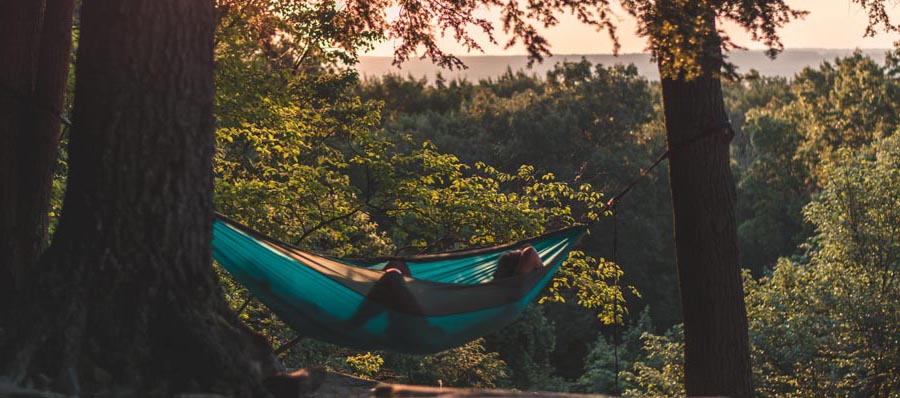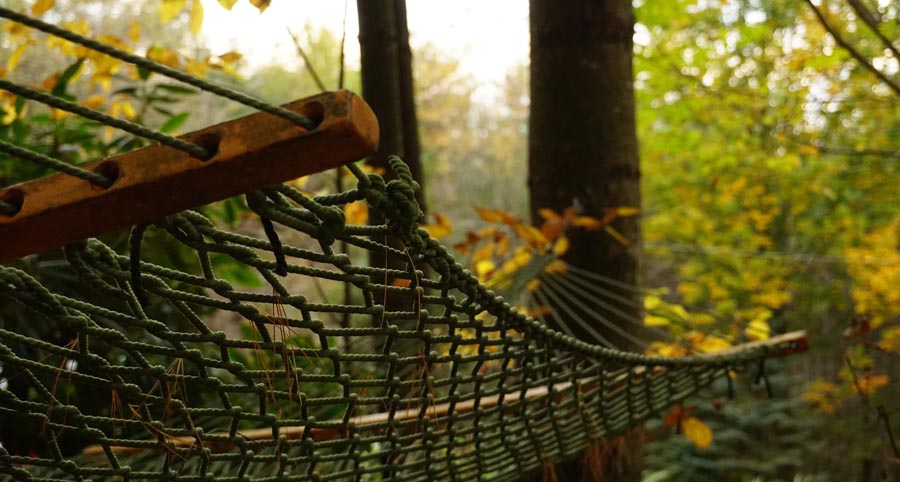
Looking for a great way to chill?
A hammock is usually the way to go. It is comfortable, relaxing, and in some cases, great for your back!
But it has a dark side too: Hammocks can be dangerous.
According to an American law firm, hammocks cause the injury or wrongful death of around 3,000 people every year.
It’s inconceivable how a supposedly fun item like a hammock can cause such tragedy.
Fortunately, there are ways to prevent accidents, which we will discuss in this article.
Here goes…
Hammocks are generally safe but some situations could lead to injuries, or worse, deaths. According to an American law firm, around 3,000 accidents are caused by hammocks. In most cases, it’s due to improper use of the hammock. That’s why people who install a hammock at home or use a hammock on backpacking or camping trips must be stern about its proper usage.
Are Hammocks Safe?

Don’t let statistics deter you from enjoying your hammock.
Hammocks are generally safe.
Unfortunately, some instances lead to freak accidents.
Here are some examples of hammock mishaps:
Ohio Sisters Died in a Hammock When Brick Pillar Collapsed
Scout and Chasey Scaravilli, 12 and 14-year-old sisters from Ohio in the United States, died when the brick pillar their hammock was attached to collapsed in June 2020.
The sisters fell and the bricks buried them during the collapse.
The hammock was attached to a tree and a brick pillar.
It was common for the two to curl up together in the hammock during a lazy day.
Experts said it was an isolated incident and doesn’t happen often.
But the lesson is clear, people need to make sure the hammocks are attached to stable pillars, trees, or walls.
A similar incident claimed the life of a 19-year-old student in Oregon in August 2022. Two other students were badly injured in the same incident.
Several Children Choke on Hammock Strings
There have been many reports of accidental strangulation among children who were left in a hammock unattended.
Hammocks are commonly used as cradles among babies because most of them love the swinging sensation.
Reported cases include children being strangled by the hammock when it got twisted.
Some infants have gotten their small heads stuck in between hammock strings that choked them.
Tree Gave Out and Killed Teen
A camping trip went terribly wrong when the tree supporting the hammock of 15-year-old Joelle Dalgleish fell on her.
Dalgleish died from a fractured skull.
She was on a camping trip with a group of friends in Red Top Mountain State Park in Georgia in May 2017.
Tips to Ensure Hammock Safety
Some of these hammock tragedies are avoidable.
To ensure accidents don’t happen, take these tips to heart:
1. Buy From a Reputable Manufacturer
Branded products are usually more expensive than generic ones, but they are usually worth it.
Only buy hammocks from credible and long-serving manufacturers.
Paying extra euros or dollars for safety is logical.
If you are not familiar with hammock brands, read reviews and ask experts for feedback before buying your first hammock.
2. Check the Weight Capacity
Some people love cuddling in hammocks.
I’m not just referring to lovers here since some family members also enjoy sharing a hammock without thinking about the weight limit.
Always check the product information and abide by the maximum weight capacity.
3. Ensure Stable Foundations for Suspension and Attachments
Hammocks have to be hung from two ends, both of which have to be stable.
You can hang hammocks on trees, so it’s best to educate yourself about the best tree options for hammocking.
But if they are not available, at least you know the basic features to look for:
- Thick trunk
- Dense foliage
- No dead or brittle branches
- No pests
And if you are thinking of hanging the hammock on a brick wall, know that you need extra support, like a mounting bracket or plate.
4. Don’t Leave Children Unattended
Children are the most common victims of hammock tragedies.
There are incidents of infants getting strangled by hammock strings.
The safer bet is to prevent infants and babies from using hammocks and stick to proper cradles instead.
In some cases, children fell from hammocks because of unstable foundations and because most of them cannot stay still.
As a rule, children should not be left in a hammock without supervision.
If they had to be left alone, they should be educated about the possible dangers and the proper use of hammocks.
And just to be on the safe side, don’t hang the hammock higher than two feet above the ground.
In relation to that, make sure the ground is soft and grassy in case a fall ever happens.
5. Hammocks Should Have a Bit of a Sag
When a hammock is too tight or taut, it tends to flip over.
Ensure that your hammock sags a bit.
It is also easier and safer to get in and out of the hammock this way, especially for children.
6. Inspect Your Hammock Regularly
Check your hammocks now and then for holes and tears.
When you see them, repair or replace your hammock right away.
Don’t wait for the damage to get worse and result in injuries.
Look for fading and fraying as well because these may be signs of weakness in the hammock.
7. Don’t Hang the Hammock Too High
I get it.
Part of the beauty and satisfaction of lounging in a hammock is the feeling of being at a high vantage point.
Along with the swinging, it almost feels like you are flying.
However, as common sense dictates, the higher you go, the harder you fall.
Keep your hammock at a sensible height.
Also, take note of what’s under your hammock.
You don’t want to hang your hammock thinking about a possible accident but you need to be practical.
Consider the ground that you may fall on just in case of a freak accident.
If there are plenty of rocks and sharp objects on the ground, you are better off setting up elsewhere.
What Type of Hammock Is Safest?

Hammocks have been around for thousands of years.
So, technically, they are safe or else people would have abandoned the idea of hammocking.
However, freak accidents happen, and it is up to you to prevent such things as much as you can.
Manufacturers make hammocks with safety in mind.
But some situations are beyond the manufacturer’s control.
To answer the question, the safest hammock is the one made by a good brand and installed properly by the owner.
It is a combination of manufacturer’s and owner’s responsibilities.
The manufacturer is obliged to do the following:
- Create a safe and durable hammock
- Enumerate important details in the label or product information: material, weight capacity, etc.
- Provide instructions on how to safely install and care for the hammock
The hammock buyer/owner also has their own set of responsibilities:
- Follow the instructions on how to safely install and care for the hammock
- Ensure the foundations for the suspension are stable
- Ensure attachments are secure
- Regularly inspect the hammock for fraying, holes, tears, and possible damage
- Adhere to the weight limit of the hammock
- Educate all hammock users on the proper ways to enjoy hammocking
In a way, safety is every person’s responsibility.
Final Thoughts

A hammock should be a fun and relaxing thing to have at home or during a camping trip.
But once in a while, freak accidents happen that may result in injuries or fatalities (perish the thought) caused by a hammock.
Good thing most of them are preventable.
It’s all about taking responsibility and leaving no room for accidents to happen.
Hammocks are generally safe, but you need to do your part to ensure it remains that way.
